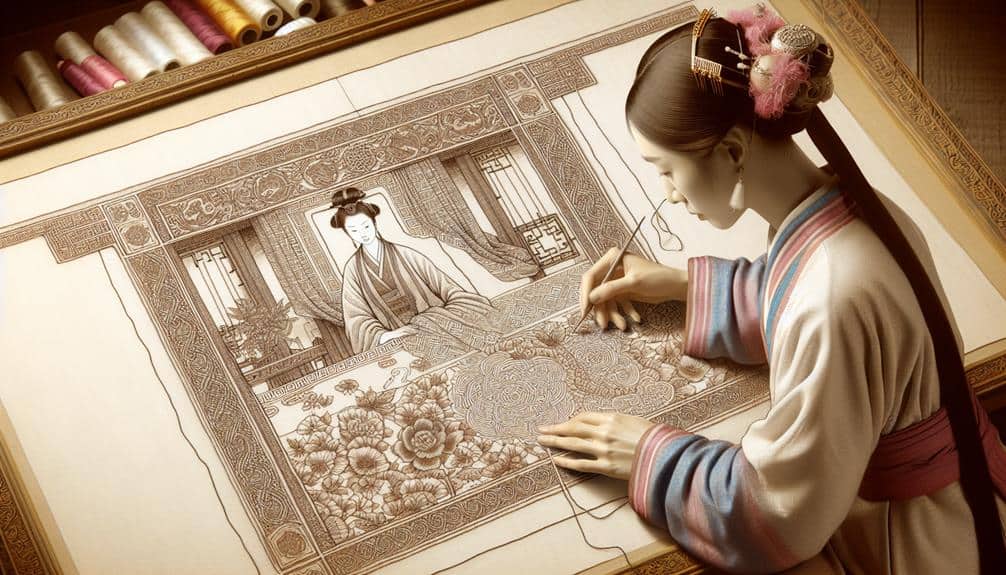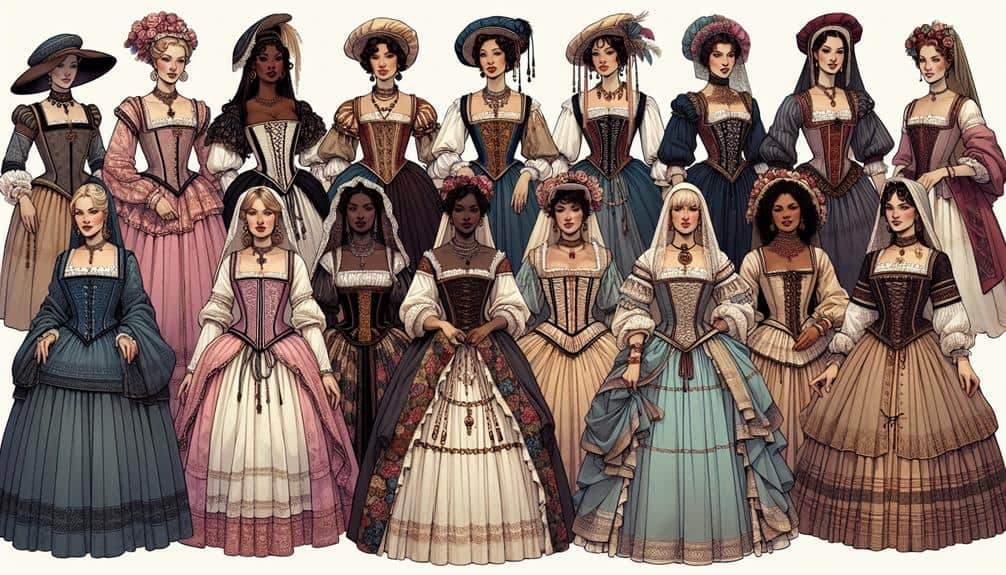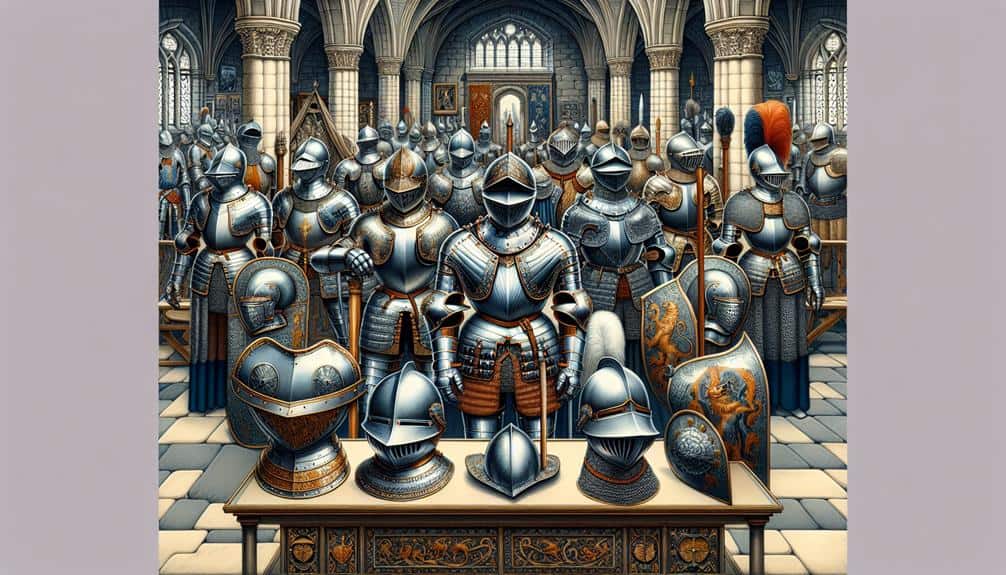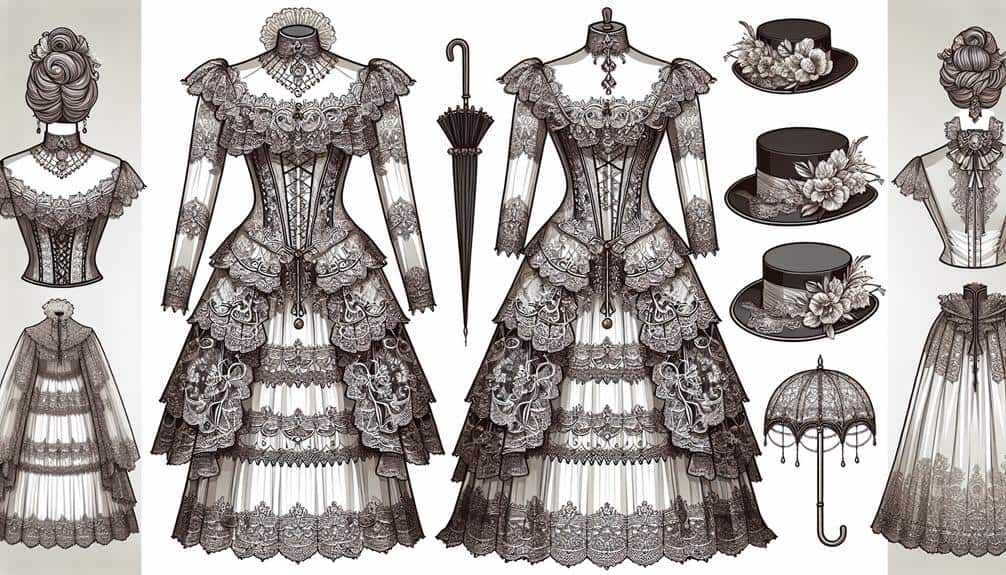You know the saying, 'Clothes make the man.' But what if those clothes were more than just garments?
The exploration of the Han Dynasty silk robe plunges into a world where attire was a symbol of power, status, and cultural identity. The journey to uncover the secrets woven into this ancient garment reveals fascinating insights into the past.
So, why did experts go through the meticulous process of recreating this piece of history? The answer lies in…
Key Takeaways
- Symbolizes status, wealth, and social hierarchy in ancient Chinese society.
- Reflects intricate craftsmanship and societal values through detailed embroidery and luxurious silk.
- Advances preservation and education, shedding light on Han Dynasty fashion and norms.
- Influences modern trends like cosplay with elegant attire and intricate designs.
Cultural Significance of Han Dynasty Robe
The Han Dynasty robe holds immense cultural significance, serving as a symbol of status, wealth, and social hierarchy within ancient Chinese society. Its symbolic representation goes beyond mere clothing; it reflects the intricate social structure and values of the time. The robe's artistic craftsmanship is evident in the detailed embroidery, luxurious silk fabric, and elegant designs that adorn it. Each element of the robe, from the choice of colors to the patterns used, conveys specific meanings and messages about the wearer's position in society.
The symbolic representation of the Han Dynasty robe extends to its role in ceremonies and official functions. Wearing the robe was a display of power and authority, signaling one's position in the hierarchical structure of the dynasty. The craftsmanship involved in creating these robes was highly esteemed, with skilled artisans dedicating countless hours to perfecting every stitch and detail. The robe became not just a garment but a reflection of the artistry and sophistication of the era.
Historical Accuracy in Costume Reconstruction
With meticulous attention to historical details and thorough research, costume reconstruction efforts aim to authentically capture the essence of ancient attire. When it comes to historical accuracy in costume reconstruction, several challenges and research methods play a vital role:
- Accuracy Challenges:
- Limited Surviving Artifacts: The scarcity of intact ancient garments poses a challenge in understanding construction techniques and materials.
- Interpretation of Visual Sources: Deciphering the intricate details from artistic representations requires expertise to guarantee accuracy.
- Evolution of Fashion: Styles and techniques evolved over time, making it essential to pinpoint the specific era for accurate reconstructions.
- Research Methods:
- Textual References: Studying historical texts provides insights into garment descriptions and materials used.
- Archaeological Discoveries: Analysis of unearthed textiles offers valuable information on weaving techniques and fabric types.
- Experimental Archaeology: Recreating garments using traditional methods helps validate research findings.
- Collaboration with Experts: Working with historians, archaeologists, and textile specialists ensures thorough and accurate reconstructions.
Materials and Techniques Used in Reconstruction
Reconstructing ancient costumes requires meticulous selection of materials and precise application of historical techniques to authentically capture the essence of bygone attire. When reconstructing the Han Dynasty silk robe, silk weaving played a critical role in replicating the luxurious fabric used during that era. Skilled artisans employed traditional weaving methods to recreate the intricate patterns and designs found on the original robes.
Dyeing techniques were also pivotal in achieving historical accuracy. The vibrant colors seen in Han Dynasty clothing were achieved through various dyeing methods such as using natural dyes derived from plants and minerals. These techniques were meticulously studied and replicated to guarantee the reconstructed silk robe mirrored the vivid hues of its ancient counterpart.
Moreover, attention to detail was paramount in the reconstruction process. Every stitch, weave, and dye had to align with historical records and archaeological findings to produce a garment that truly represented Han Dynasty fashion. By combining expertise in silk weaving and dyeing techniques, the reconstructed Han Dynasty silk robe embodies the opulence and sophistication of this ancient period.
Influence of Han Dynasty Fashion on Cosplay
How did the fashion of the Han Dynasty influence modern cosplay trends? The Han Dynasty's elegant attire has left a lasting impact on contemporary cosplay, with enthusiasts drawing inspiration from its intricate designs and luxurious fabrics to create stunning costumes. Here are four ways in which the Han Dynasty fashion has influenced modern interpretation in cosplay:
- Intricate Embroidery: Han Dynasty clothing was known for its elaborate embroidery featuring motifs like dragons, phoenixes, and floral patterns. Cosplayers often replicate this detailed embroidery in their costumes to capture the essence of Han Dynasty fashion.
- Flowing Silhouettes: The flowing robes and wide sleeves of Han Dynasty attire have become iconic in cosplay circles. Cosplayers emulate this silhouette to recreate the regal and majestic look of ancient Chinese nobility.
- Rich Fabrics: Silk was a prized fabric during the Han Dynasty, and it continues to be a popular choice for Han Dynasty cosplay. The sheen and drape of silk fabrics contribute to the authenticity of these costumes.
- Accessories: From ornate hairpins to jade jewelry, accessories played a significant role in Han Dynasty fashion. Cosplayers pay attention to these details, incorporating accessories to complete their Han Dynasty-inspired looks.
Preservation and Education Through Reconstruction
Preservation and education are advanced through the meticulous reconstruction of historical artifacts and garments from the Han Dynasty. By employing sophisticated preservation methods, experts can make certain that these ancient pieces are accurately recreated, allowing for a deeper understanding of the craftsmanship and techniques used during that time.
The reconstruction of the Han Dynasty silk robe not only maintains the cultural heritage but also serves an educational purpose by offering insights into the intricate designs and materials utilized in ancient Chinese clothing.
Through the reconstruction process, researchers and historians can unravel the mysteries of Han Dynasty fashion, shedding light on the societal norms and aesthetic preferences of that era. By studying these reconstructed garments, scholars can gain a better appreciation for the skills of the artisans who crafted them centuries ago.
The educational value of these reconstructions extends beyond mere historical curiosity, providing a tangible link to the past that enriches our understanding of ancient civilizations.
Frequently Asked Questions
How Long Did It Take to Reconstruct the Han Dynasty Silk Robe?
To reconstruct the Han Dynasty silk robe, it took skilled artisans several months. The materials used included authentic silk, gold threads, and intricate embroidery. The process required attention to historical detail and craftsmanship to replicate the original garment.
Were Any Ancient Weaving Techniques Used in the Reconstruction Process?
In the reconstruction process, ancient weaving techniques were skillfully integrated with modern materials. This fusion allowed for the faithful restoration of the Han Dynasty silk robe, showcasing a harmonious blend of tradition and innovation.
What Challenges Did the Team Face in Accurately Recreating the Colors of the Original Robe?
To accurately recreate the colors of the original Han Dynasty silk robe, the team faced various challenges. Achieving precision required meticulous research, testing different dyes, and analyzing historical records. Balancing authenticity and modern techniques posed significant obstacles.
Are There Any Plans to Display the Reconstructed Han Dynasty Silk Robe in a Museum?
Thinking about the display plans for the reconstructed Han Dynasty silk robe? Conservation techniques guarantee its preservation. The team aims to showcase it in a museum, inviting you to witness history's elegance firsthand.
Did the Team Consult With Any Experts in Han Dynasty Fashion and Textiles During the Reconstruction Process?
Consulting experts in Han Dynasty fashion and textiles was essential for ensuring historical accuracy during the reconstruction process. Their insights and knowledge helped to recreate the silk robe with meticulous attention to detail.



